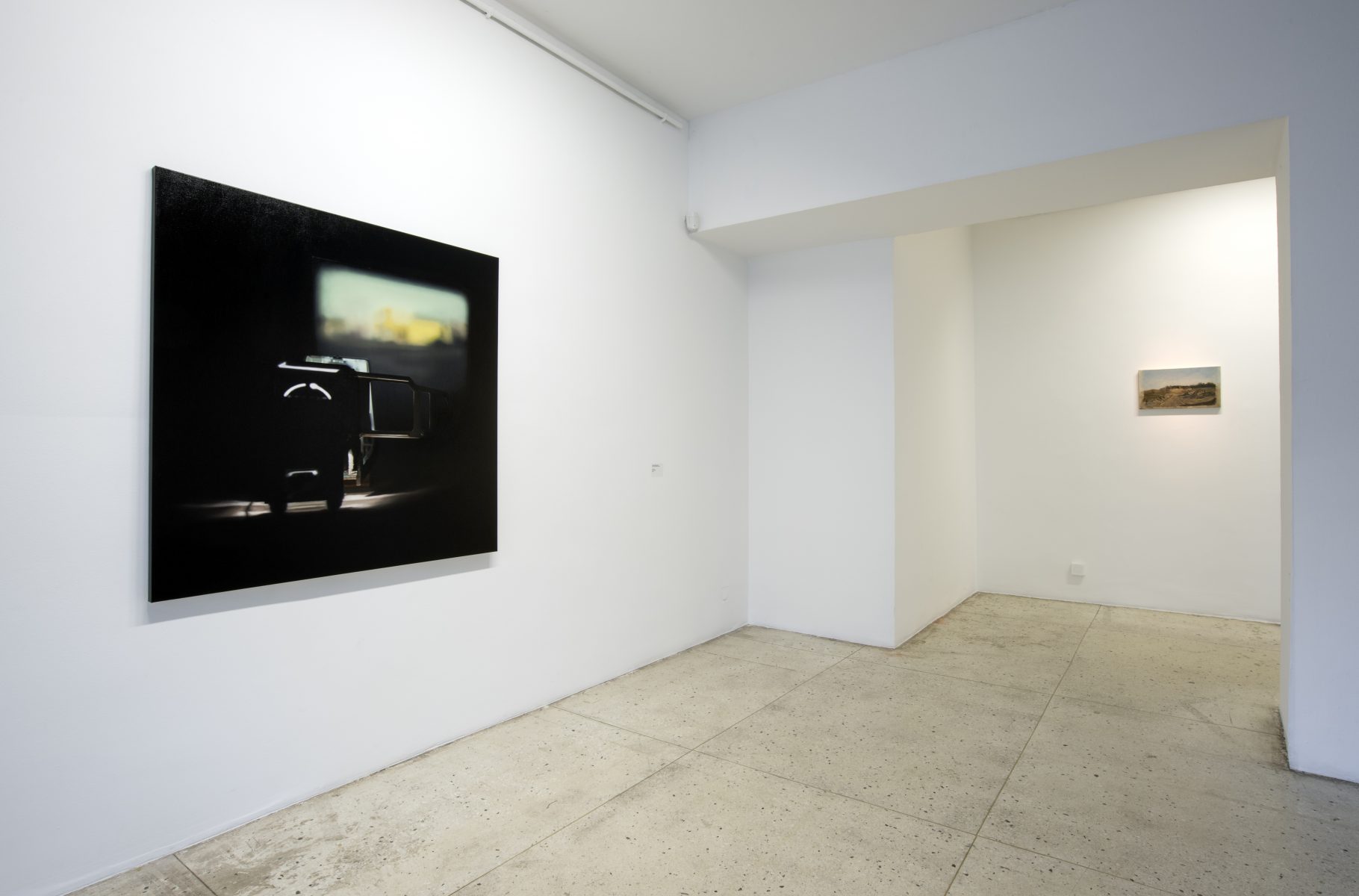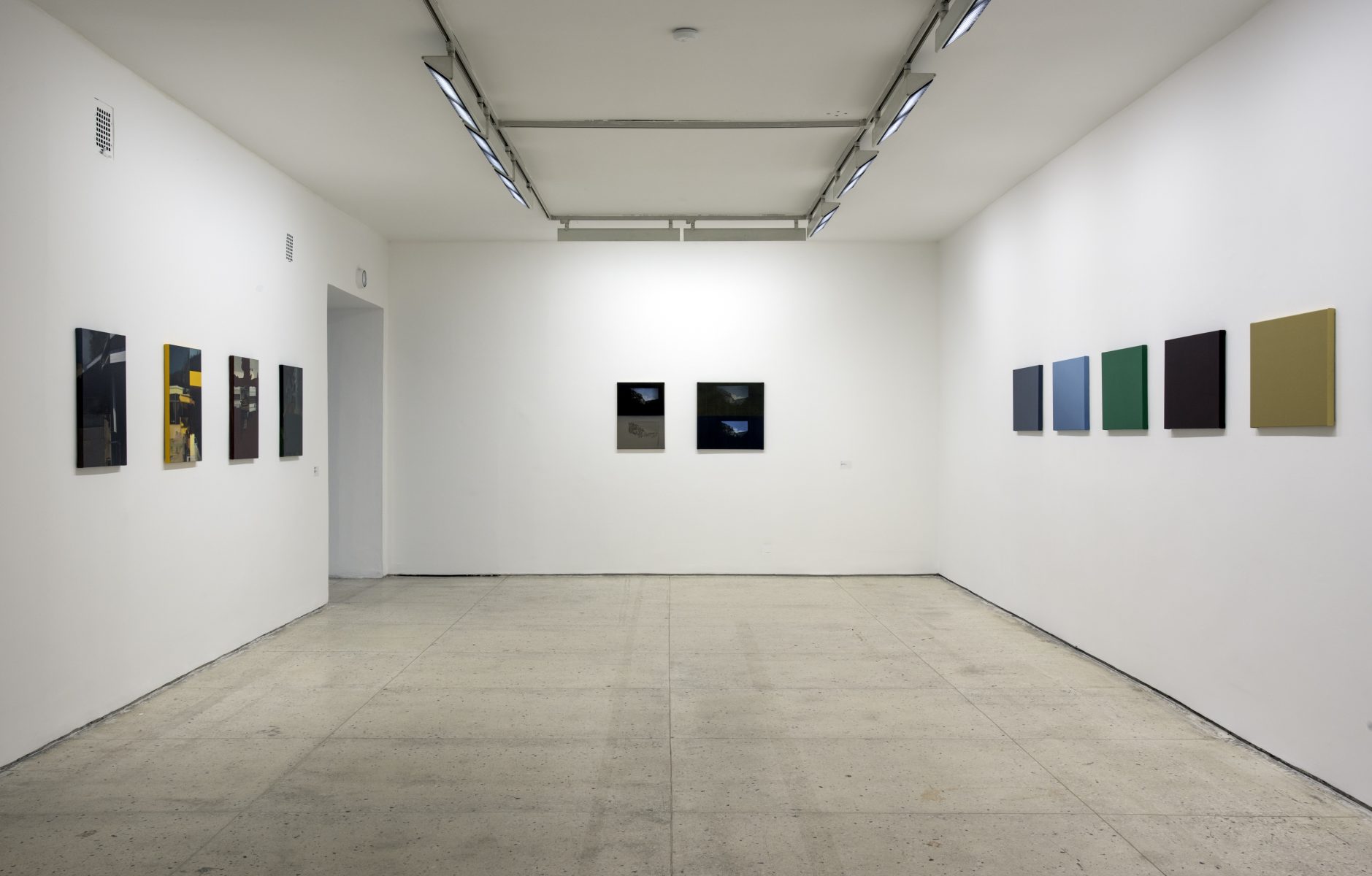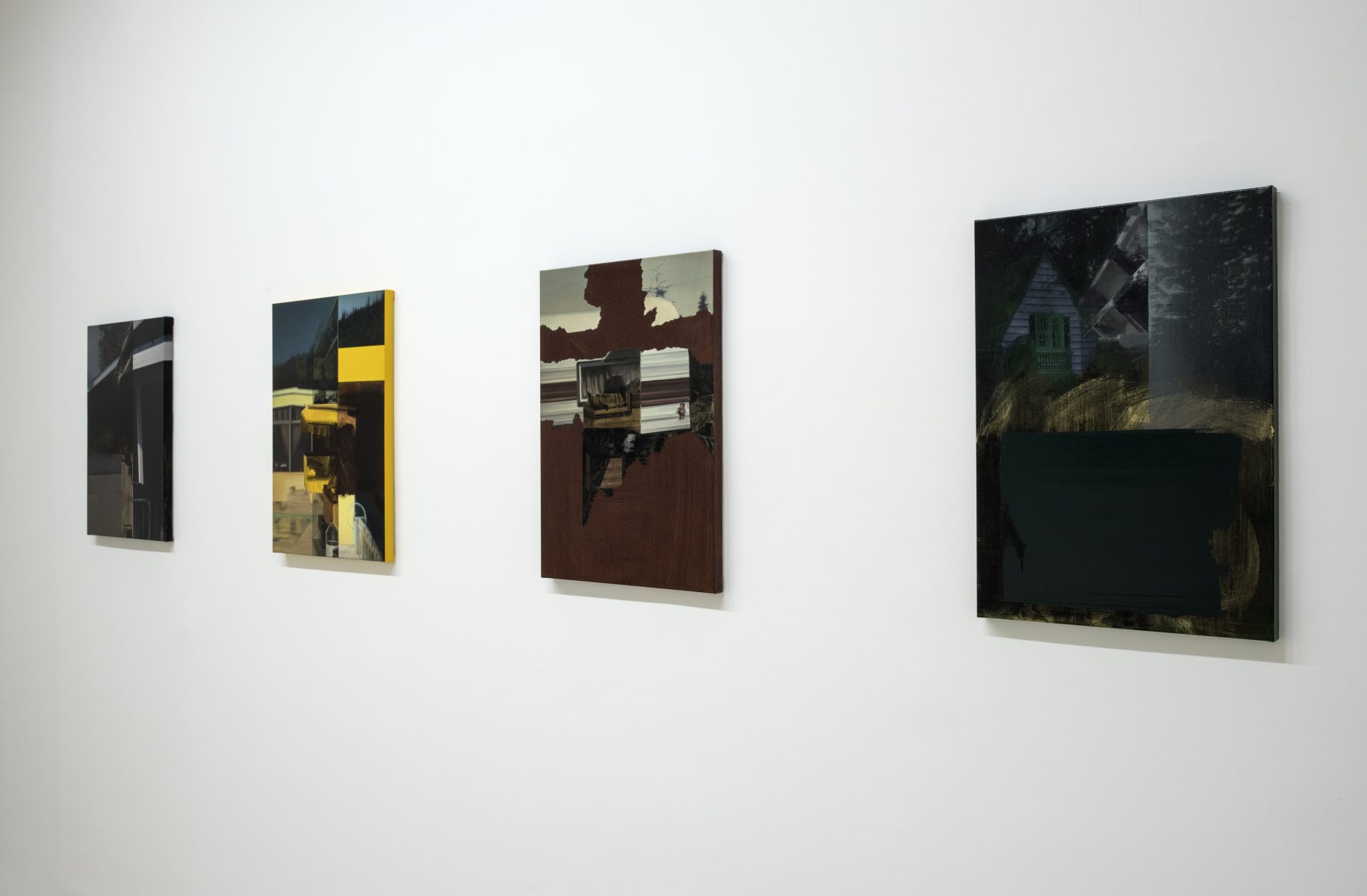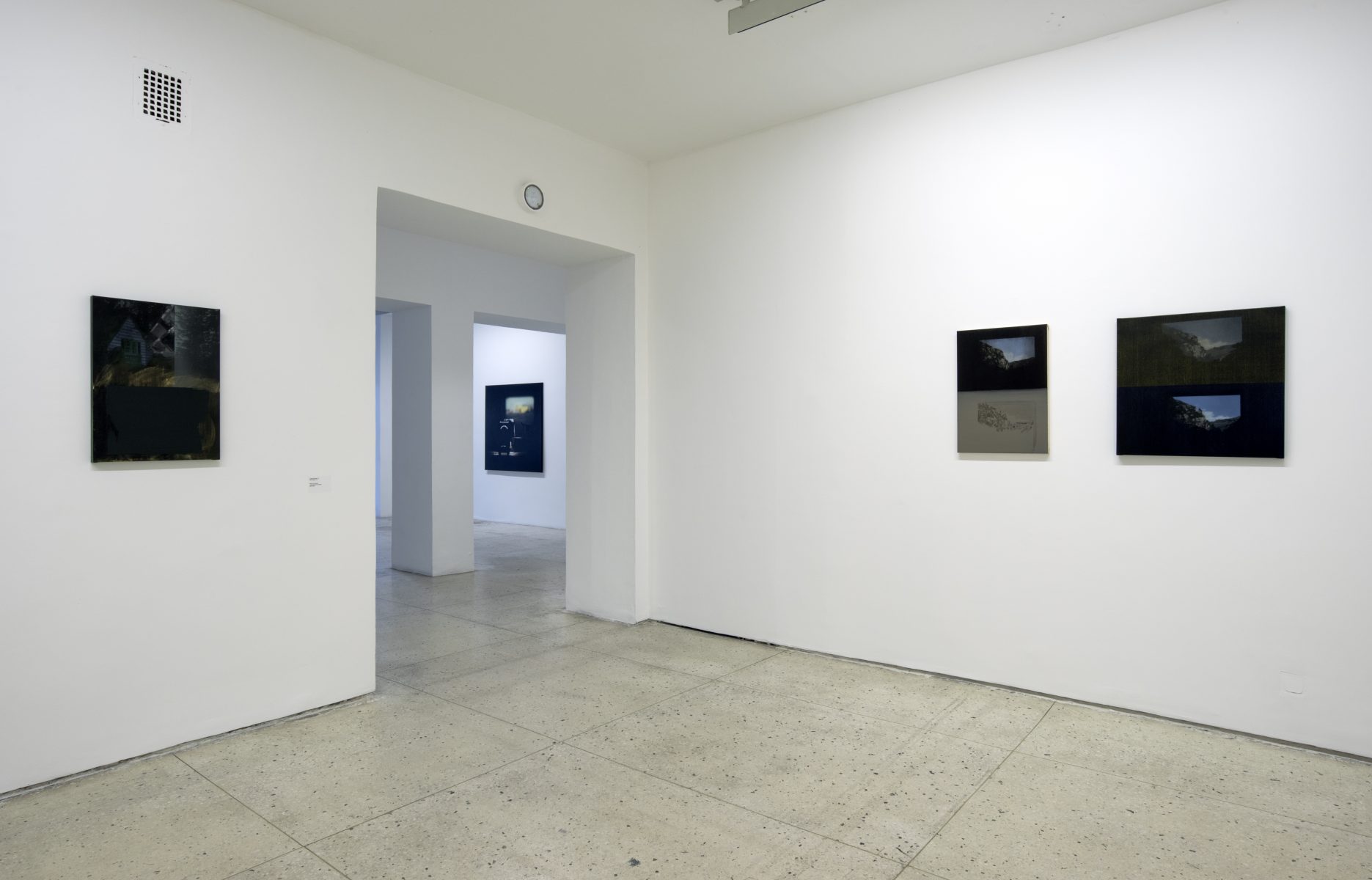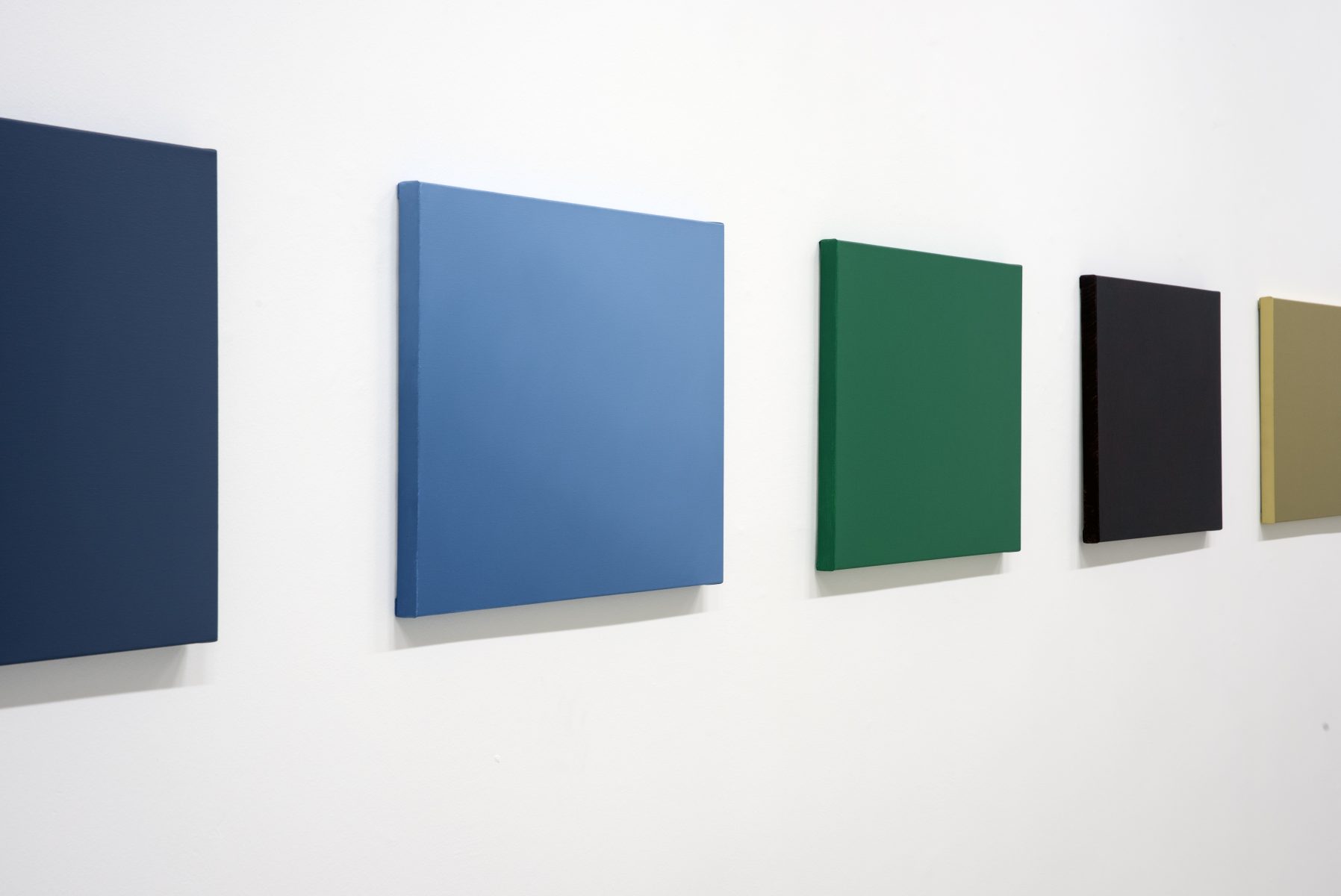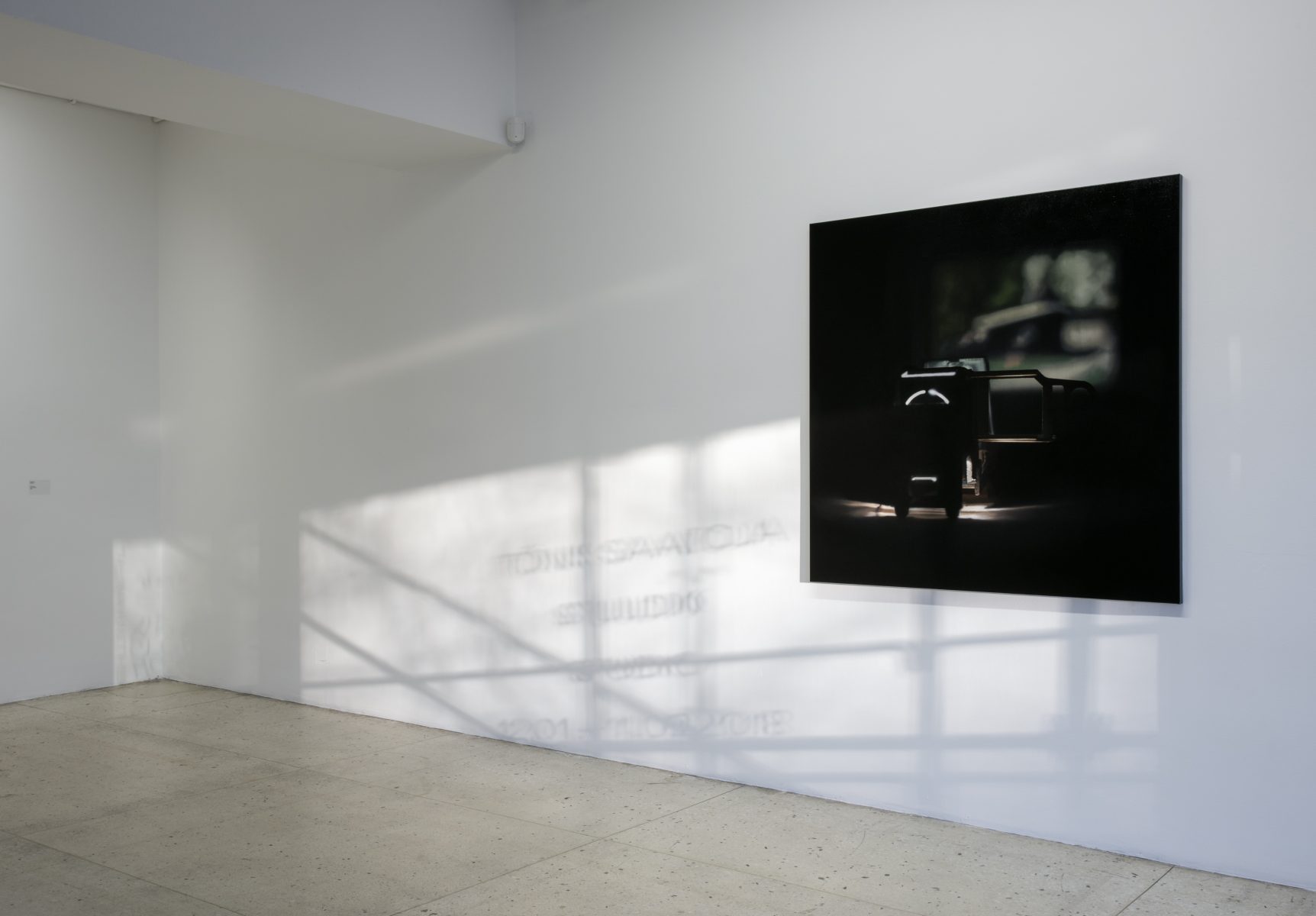Tõnis Saadoja. Studio
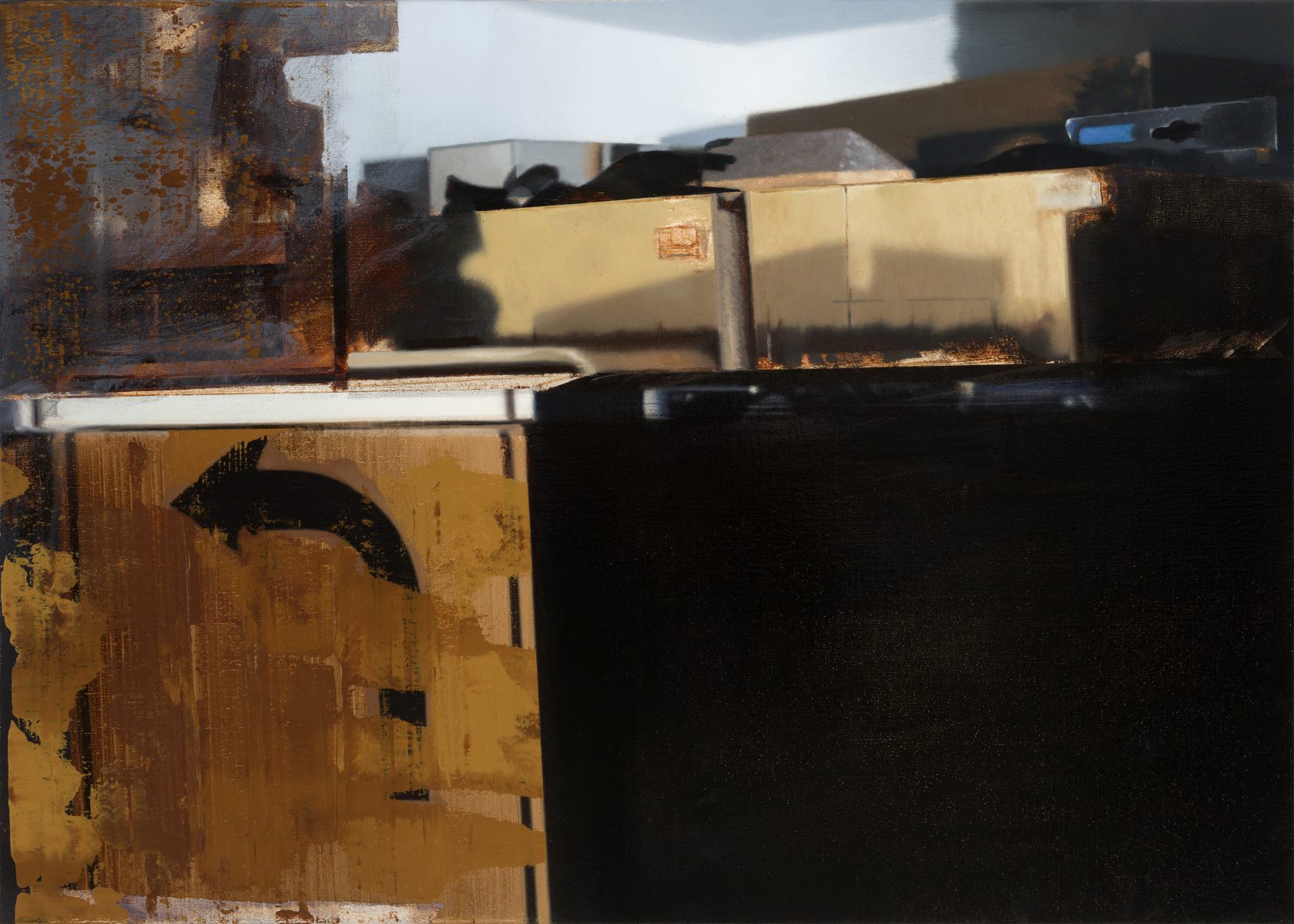
A close-up of the studio and what happens there.
What does the copy of Eugen Dücker’s landscape painting, the projected image of a slide projector in the darkness of a studio, a travel photo of the West Coast area of United States from a family album, and a flat, painted canvas have in common? They are all pictures. They are all images with a field of influence and compositional logic. They are all conditionally readable as the different stages of the reality of an image.
Studio is an exhibition which examines pictures as a process; this is an exhibition that speaks primarily about painting, by dissecting the construction and architecture of painting. This is the scope of my personal painting space on a miniature scale.
By giving up documental, anthropological and otherwise restrictive concreteness, the pictorial possibilities are spread before the viewer – sometimes compressed, sometimes dissipated.
As a counterbalance to photographic reality that functions as a ready made solution, I am searching for variety, irregularity and chance in my paintings. – Tõnis Saadoja
The Studio by Tõnis Saadoja (b. 1980, studied painting in Estonia and England) is an integral exposition comprised of four units and an attempt to lighten new paths in the artist’s developmental process. Saadoja, who seldom leaves his works unfinished, presents the viewer with (just as completed) laboratory experiments, a concentrated selection of his searches, which he describes as follows: “These are experiments, there is nothing irrevocable about them.” As always with Saadoja, the Studio´s story started long before the exhibition itself and a review of his earlier works is helpful in understanding this exhibition.
It seems that a central marker in Tõnis Saadoja’s creative experience was the ceiling painting in the NO99 Theatre, which he completed in 2012. The monumentality of the monochromatic pictorial circle painted on a 50m2 surface and the inevitably dizzying distance between the work and the viewer was resolved by Saadoja with literally head-spinning elegance. For an artist who – until then – had controlled his work with analytical sense and method, this challenge probably provided a lesson in serious external pressure and humility. The success of the masterpiece presumably also provided satisfaction and self-confidence. Like a breath let out in relief, two very good exhibitions followed: Architectural Photography with a Little Boy (2014) and Etudes for Piano and Canvas (2015). The artist – having victoriously landed back on Earth – greeted familiar ground with his trademark gradual delving into the subject matter and legible seriality. He also added something new: the freedom to loosen this seriality by strengthening the impact of single pictures. And to loosen the leash of the reality-guarantee – the photo image itself – by minimising this image (at times to the extreme) and rendering it conditional.
With Little Boy and Etudes, an emotional assertiveness was introduced into Saadoja’s pictures, along with the courage to deal with non-banal beauty gradation within one picture space. Now, in the quiet of his studio, at viewers’ eye level and within their reach, the creation borne by the logic of the series digs increasingly into the possibilities of accommodating everything in a single picture. The pursuit of naked surface and illusory pictorial space, the rediscovery of colour. Like an epic novel that started with the NO99 pine treetops, and became a short story with the exhibitions in 2014 and 2015, Saadoja is moving in reverse to established trajectories, which have been shaped by historical rules, towards poetical short forms, and laconically phrased necessities. When it turns out that this is now impossible or pointless, he then shows how, without spilling any blood, the art of painting is dying, or even more probably, that this also is not irrevocable. That “… this is definitely not all that an artist or the viewer are capable of. Or what they were capable of once.”
The artist and the Tallinn Art Hall thank: The Cultural Endowment of Estonia, The Ministry of Culture, Tallinn Cultural Office, Veinisõber, Sadolin. Valge Kuup installs the exhibitions at the Tallinn Art Hall.



